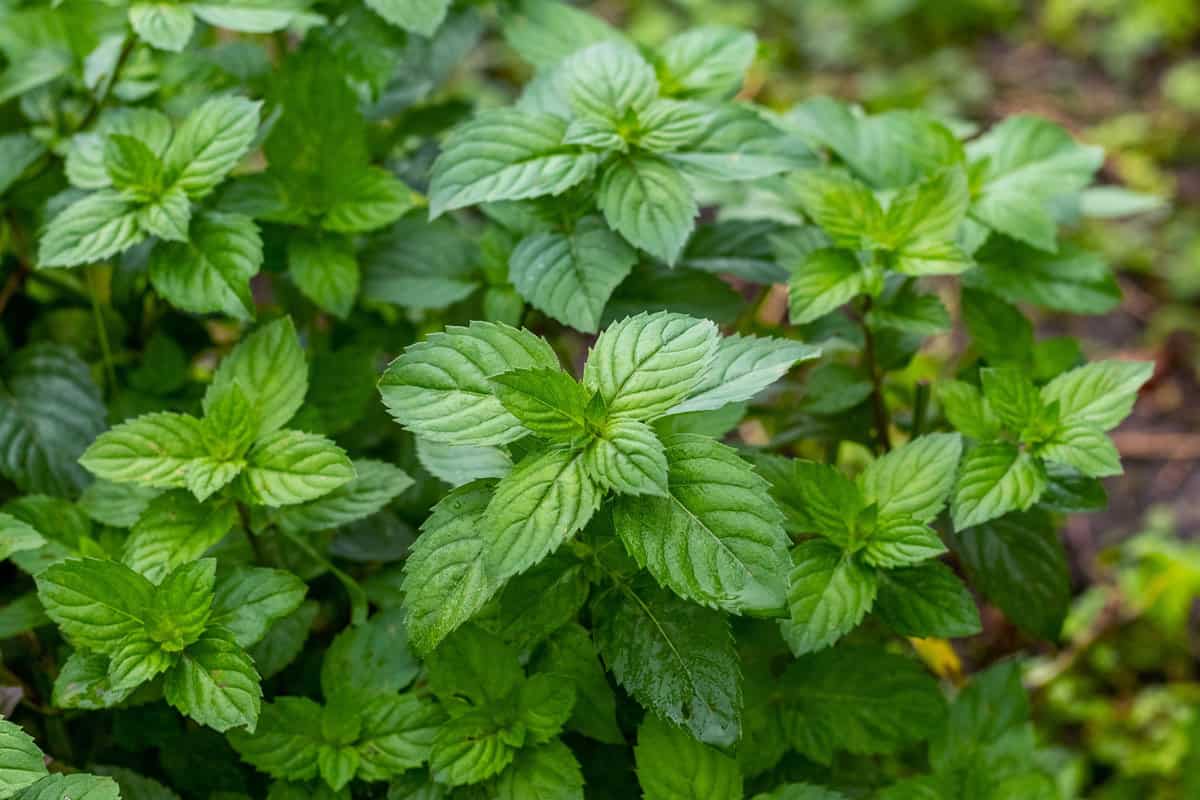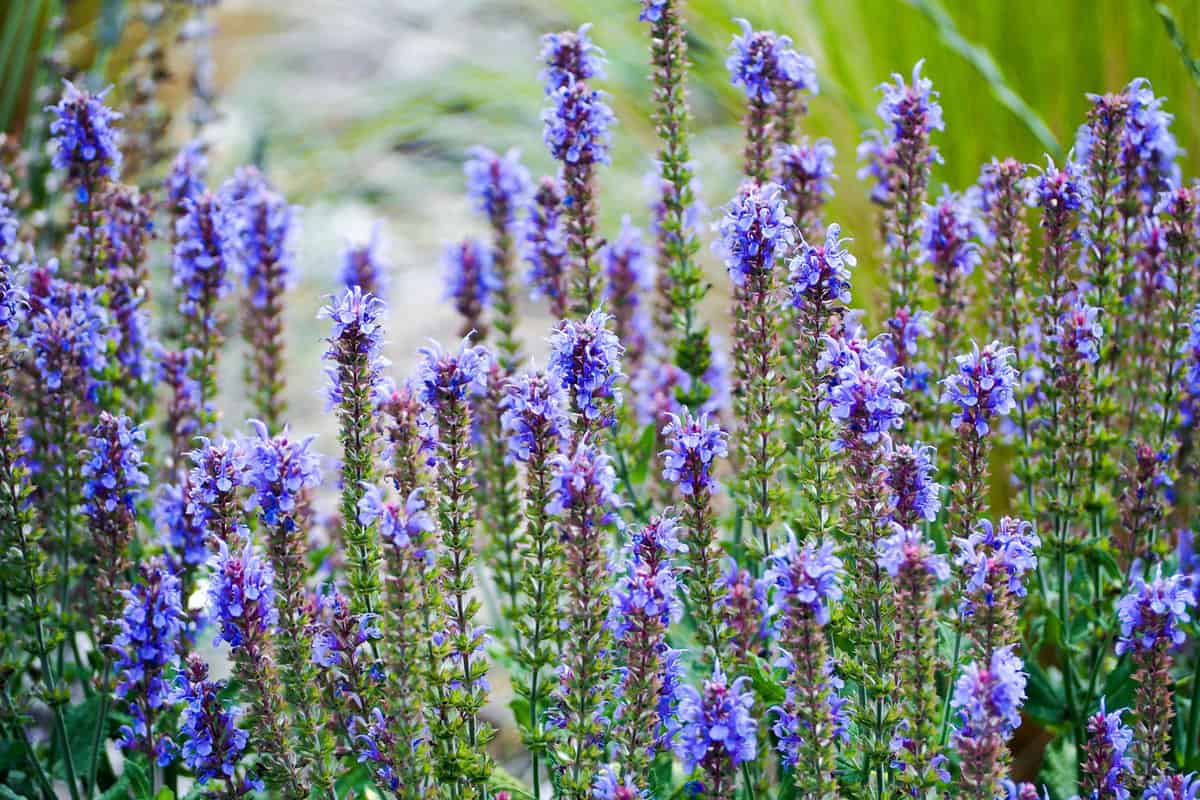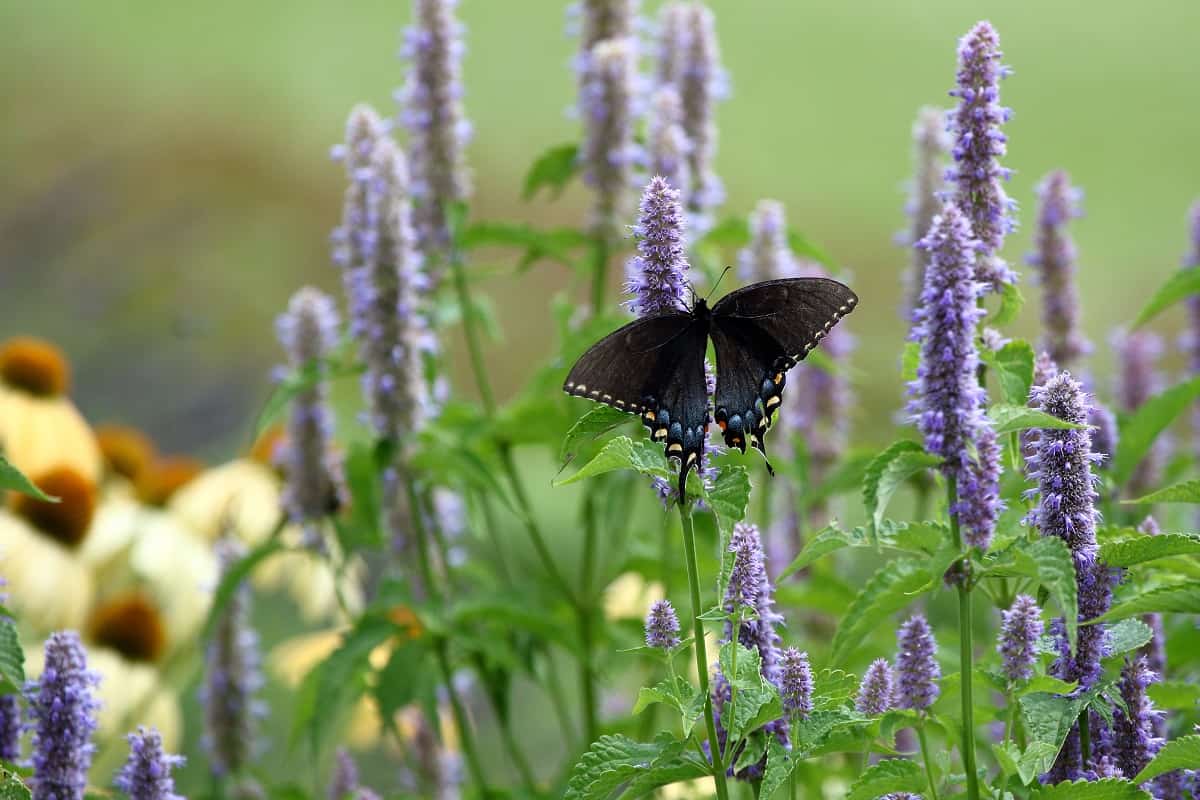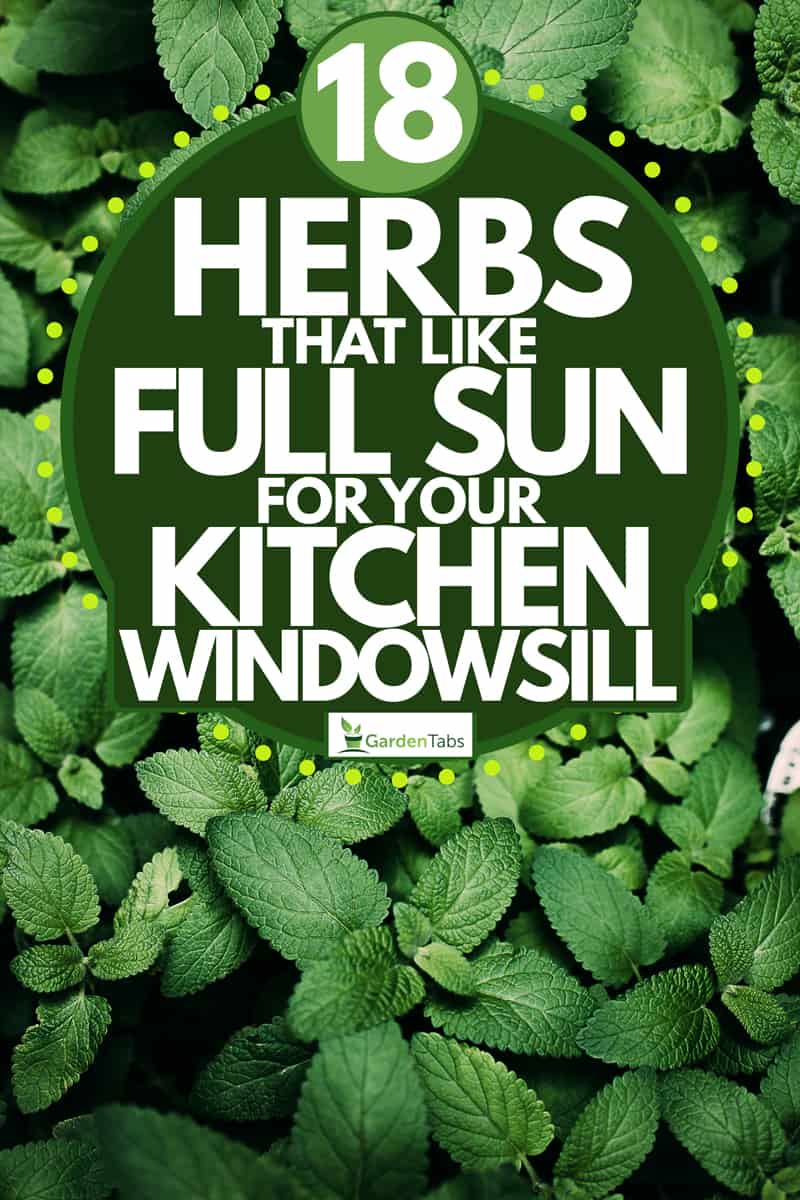For many, a kitchen windowsill adorned with vibrant, fragrant herbs represents both nature and nourishment. However, not all herbs thrive in the same conditions.
Sunlight, particularly, can be a deal-maker or breaker for these delicate greens.
If your kitchen is blessed with abundant sunlight, a slew of sun-loving herbs are ready to flourish on that spot.
In this guide, we will explore 18 herbs that revel in full sun exposure, ready to add both aesthetic and culinary zest to your kitchen.
From the familiar faces of basil and rosemary to the less common but equally delightful lemon balm and lavender, discover how these sun-soaked herbs can elevate your windowsill and your home-cooked meals.
18 Herbs That Like Full Sunshine
1. Rosemary
Rosemary (Salvia rosmarinus) is a favored aromatic herb widely used in various culinary applications.
![Close-up of rosemary plant in evening light, Shrubs For Pots In Full Sun [17 Great Ideas For Your Landscaping]](https://gardentabs.com/wp-content/uploads/2022/07/Close-up-of-rosemary-plant-in-evening-light.jpg)
This perennial herb, characterized by its woody stems and aromatic needle-like leaves, thrives on bushy shrubs and can be grown in containers or directly in garden beds.
Rosemary prefers full sun exposure and warm climates. For regions cooler than USDA hardiness zone 7, it's advisable to plant rosemary in a container.
This can then be relocated to a sunny windowsill during the colder months to maintain its growth.
Get these 3-pcs live plant on Amazon.
2. Mint
Mint (Mentha) is a robust perennial herb known for its vigorous growth and diverse applications, ranging from ground covers and garden decorations to medicinal and culinary uses.

It's perhaps most recognized for its distinctive spearmint flavor, which adds a refreshing touch to teas, cocktails like mint juleps, and a zesty complement to lamb dishes when minced.
Mint plants thrive in full sun, and some varieties even produce flowers.
It's important to space mint plants a couple of feet apart as they tend to spread and grow extensively.
They prefer moist locations that resemble their native creek bank habitats, ensuring healthy growth and abundant foliage.
Get this mint live plant on Amazon.
3. Thyme
Thyme (Thymus) is another aromatic perennial herb used in many kitchens.
Thyme is thought to have antibacterial, insecticidal, and possibly antifungal properties and was even used for embalming at one point.
This evergreen herb is easy to grow in containers as well as in herb gardens.
It likes full sun and relatively dry soil that mimics its native Mediterranean region.
Check out this organic thyme plant in a 2.5-inch pot on Amazon.
4. Sage
Sage (Salvia Officinalis) is a low shrub with soft, grey-green foliage. This herb can be grown in container gardens or in your garden beds and is best known for its lovely aromatic smell.

Commonly used for cooking, sage is also known for its cleansing properties and will often be sold in dried bundles that are lit and used to "smudge" bad feelings and juju from homes and property.
Sage likes full sun and well-drained soil. It grows as a perennial in zones 5-8, but any further south it grows as an annual only.
Check out this 1G Silverado Sage plant on Amazon.
5. Basil
Basil (Ocimum basilicum) is an easy to grow culinary herb. Whether you're using it in pesto or making tomato and basil salads with fresh mozzarella cheese, this herb is a must-have for every kitchen gardener.
It grows easily in containers and garden beds, but must be clipped back regularly before blooming or it will go to seed and get too leggy.
There are several different types of basil, with sweet basil being the most commonly used in Italian cooking.
But if you're going to plant some basil, you might grow some Thai basil, too.
Get these 150+ heirloom non-GMO basil seeds on Amazon.
6. Chives
Chives (Allium schoenoprasum) are a beautiful addition to an herb garden or perennial bed.
The plants have slender stalks (the part we use in our cooking) and bloom with gorgeous pale purple flowers.
Chive seeds may be sown directly into your garden soil in the spring after chances of frost are past. They can also be started in pots a bit earlier.
Chives thrive in full sun and need minimal maintenance other than an occasional watering if the soil gets too dry.
Check out this live chive plant in pot on Amazon.
7. Oregano
Oregano (Origanum vulgare) is a perennial herb with a taste similar to thyme.
It's one of the mainstays of Italian seasonings but has also been used for medicinal purposes over the years.
Once the bushes have topped about 4", you'll want to start pinching back the leaves to encourage bushier and fuller growth.
Because it's a plant with origins in the drier Mediterranean climates, it needs less water than some other herbs and loves the sun.
Check out this Cuban oregano 2 live plant on Amazon.
8. Tarragon
Tarragon (Artemisia dracunculus) is a robust herb with a peppery flavor. Use it in salad dressings and vinegar.
Though you can start it from seed, it's easier to grow tarragon from a small starter plant and transfer it into your herb garden.
It's not the prettiest plant with its fuzzy long leaves, but it will make up for that with its gorgeous smell.
These hardy plants will survive in most soil types as long as it gets full sun.
Check out this packet of 200 Tarragon seeds on Amazon.
9. Anise
Anise (Pimpinella anisum) is best known for its sweet licorice flavor and odor. Chew the seeds to cure bad breath and steep the leaves into tea.
The seeds are added to loaves of bread, cakes, cookies, applesauce, soups, and beverages.

When coated with candy, they’re a favorite condiment in Europe, and they’re the source of flavor in the famous liqueur anisette.
The plant grows to about 2' in height and has tiny yellow and white flowers in mid-summer.
These are followed by the fruit called aniseed, where the flavorful seeds reside for harvest.
Pure anise oil is one of the products harvested from the anise plant. This concentrated licorice flavor is wonderful for baking and making candies.
10. Chamomile
The Chamomile plant (Chamaemelum nobile) is most commonly used for teas.
Chamomile is a calming herb and helps with sleep and general relaxation.
Chamomile is used for many ailments including hay fever, menstrual disorders, inflammation, insomnia, muscle spasms, gastrointestinal disorders, and rheumatic pain.
Apply it to the skin for inflammations and skin diseases.
It's a member of the daisy family and gets lovely white and yellow flowers on the body of the plant. Of course, it loves full sun and moist soil.
View this Roman chamomile seeds on Amazon.
11. Fennel
Fennel (Foeniculum vulgare) is another herb that has a licorice-like flavor.
In the Middle Ages, fennel was thought to hold magic and people hung the plants over their doors to drive away evil spirits.
Now, fennel is most often used in recipes to add that bit of licorice flavor to food.
The plant has lovely frond-like feathery leaves and a long taproot. It's easiest to plant fennel from seed. Plants will begin to flower about 90 days after planting.
Get your fennel seeds on Amazon.
12. Calendula
Calendula or pot marigolds (Calendula officinalis) are cheery flowers that are edible and can be used to add bright color to salads.
In salves, lip glosses, and balms, they help with minor skin irritations.
Calendula likes fertile and well-drained soil, but overall is a very forgiving plant to grow.
If you deadhead the flowers frequently, they won't go to seed and you'll have blooms through most of the growing season.
Get your Calendula heirloom seeds on Amazon.
13. St. Johns Wort
St. Johns Wort (Hypericum perforatum) is a well-known medicinal herb. It's used as an anti-inflammatory, anti-bacterial, disinfectant, and a remedy for disorders of the respiratory tract and the gallbladder.
In teas, it's been used for anxiety, depression, and other sedative treatments.
The plant grows well in well-drained soils. It prefers drier soil to wet soils, and like our other herbs love the sun. It blooms early in the summer with lovely yellow blooms.
Check out this St. John's Worts heirloom seeds for planting on Amazon.
14. Dill
Dill (Anethum graveolens) is a distinctly flavored herb. It is commonly used in pickles, soups, and stews.
The plant is lovely with feathery fronds for leaves. If you let the flowers go to seed, your dill should come back year after year.
It also attracts pollinators which is a bonus in any garden. Sew your seeds directly into your garden in full sun.
Replant throughout the summer to keep fresh dill for the whole season.
Get your bouquet dill herb seeds on Amazon.
15. Echinacea
Echinacea, or coneflower, has gorgeous purple flowers and is used for healing the common cold.
It's a perennial that will grace your garden year after year and grow 2-3' tall stalks with abundant purple flowers.
They are low water plants, so they can tolerate less water than some other perennial herbs.
Echinacea thrives in full to partial sun. Plants need at least four hours of sunlight per day.
The plants grow natively along the edges of woodlands, so they will thrive in spots with morning shade or afternoon sun.
Get your starter plant Coneflower on Amazon.
16. Turmeric
Turmeric (Curcuma longa) is a perennial herb related to ginger. It doesn't have typical seeds but has rhizome nodules or fingers that are planted much like bulbs.
These fingers are harvested for medicinal and herbal uses. Therefore it's important to not harvest the entire bulb. Save some for next year's plants.
Turmeric is used as a spice in cooking but has also become a popular supplement for joint pain and mobility.
Turmeric can be grown outside year-round in USDA zones 8 and higher, in the ground or in containers.
For cooler climates, it will need to move indoors for the winter.
Check out this Turmeric live plant on Amazon.
17. Stevia
Stevia (Stevia rebaudiana) is best known for its use as a low-glycemic natural sweetener.
Grow it in containers or directly in the ground. This warmth-loving plant is more of an annual in most parts of the US as it prefers a hot climate and well-draining soil.
As for harvesting the leaves for use, the leaves taste best before the plant blooms and are sweetest in the cool of autumn.
Check out this Stevia rare heirloom seeds on Amazon.
18. Valerian
Valerian (Valeriana officinalis) is commonly used as an herb for sleep disorders and insomnia.
The roots are ground into capsules that are sold as supplements at natural food stores and the like.
The plant has a lovely wildflower look with leggy stalks and flowers reminiscent of Queen Ann's lace. They love the sun and well-drained soil.
Get your Valerian non-GMO seeds on Amazon.
Enjoy Planting These Sun Loving Herbs!
Growing herbs is super satisfying. They are beautiful and practical plants. Use them for cooking or making home remedies.
Get several of these to add to your garden and then share with us below your gardening experience!
For more inspirational gardening posts on this site, click below:
10 Awesome Balcony Garden Containers
Are you on Twitter? You can use this image below to help us share this article.


















